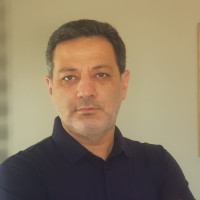Research Article
Book Reviews
Issue Editorial Board

 0000-0002-5337-3113
0000-0002-5337-3113



Aim & Scope
The aim of the International Journal of Research in Teaching Turkish (IJRTT) is to contribute to the universal knowledge of the field by creating a qualified publication platform where academic studies written with an interdisciplinary perspective on Turkish teaching, which has become increasingly important both in Turkey and abroad, as an independent discipline in recent years.
The scopes of the journal include, but are not limited to, the following topics:
- teaching Turkish as a foreign/additional language
- teaching Turkish for specific purposes
- teaching Turkish as a first language
- teaching Turkish to bilinguals
- teaching Turkish to people of Turkic origin
- Turkish language teachers’ training and education
- teaching techniques
- program development in language teaching
- assessment and evaluation in grammar teaching.
- computer assisted language teaching
- blended teaching
- language teaching and linguistics
- language teaching and literature
- language teaching and culture
- classroom management
- discourse and interaction in language teaching classroom
- learning psychology
- methods in language teaching research
- listening skills
- speaking skills
- reading skills
- writing skills
- grammar in language teaching
Author Guidelines
| Gender | Number | Percent |
| Male | 20 | %40 |
| Female | 30 | %60 |
- The articles are requested to be based on APA 7 in both in-text references and the reference list at the end of article. For this reason, footnotes are expected to be used only if provided information is required. Please refer to here for further details.
In-text Citation (Durmuş, 2013, p.145)
- Direct quotations should be given between quotation marks. Short quotations with less than 150 words should be written within the text, and longer quotations should be written as 1.5 cm indented on the right and left margins, as a free-standing block, and with 1.15 line spacing.
- In cases where more than one source is to be cited for the same citation, the works are listed in the same parenthesis, from the oldest to the newest, separated by a semicolon(s).
Example (Durmuş, 2013; Başar, 2017; Çelik 2019 & Boylu, 2020)
- If the author has two works published in the same year, it is indicated both in the text and in the reference by adding a lower-case letter to the publication year.
Example (Çangal, 2020a, p.45) and (Çangal, 2020b, p.356)
- In references with two authors, sign of “&” is used in between parenthesis. In references with more than two authors, "et al." abbreviation should be used after the surname of the first author.
Example (Durmuş & Demir, 2015, p.34), (Boylu et al., 2012, p.34)
- When pointing to an invisible source, both the source itself and the source seen by the researcher should be given in the text and reference.
Example (as cited from Kalenderoğlu, 2015, p.67. Eker, 2018, p.89).
- If the name of the author is mentioned directly in the text, it is sufficient to indicate the date and page in parentheses.
Example
- According to Demir (2000, p. 35) or according to Demir …………………… .. (2000, p. 35).
Referencing
- A comma does not follow or proceed conjunctions in the text.
- A comma does not follow or proceed correlative conjunctions. both… and… (hem … hem …) | either… or (ya … ya …) | whether… or… (gerek … gerek …)|
- A comma does not follow too (da / de) conjunction, functioning as a reinforcement and binding in sentence.
- A comma does not follow the conditional suffixes (-sa, -se).
- In the text, a comma does not follow or proceed / and / or / or / like / with / with / but / but / but / ie / even /.
Ethical Principles and Publication Policy
- In our journal, it is important that all stakeholders, especially the author(s), referees, editor and publisher, comply with the ethical principles standards. Within the scope of ethical responsibilities of our journal, all of its stakeholders have the responsibility to comply with ethical standards and ethical principles. Therefore, the author(s), reviewers, editor and publisher are expected to bear the following ethical responsibilities.
- It has been prepared by taking into account the policies and guidelines published by the Publication Ethics Committee (COPE) “https://publicationethics.org/” as open access while establishing ethical duties and responsibilities.
- Articles submitted to our journal must be original. The articles submitted to our journal should not have been published anywhere before. The article submitted to our journal should not have been sent to other journals for review in the same period/it should not be in the referee process of another journal.
- Since it has not been stated or determined that it has been published anywhere before, the legal consequences that may arise regarding the copyrights of the published works belong entirely to the author(s).
- The author(s) should not contact the people involved in the evaluation process before and during the evaluation process of the article.
- Citations/citations from other sources must be stated accurately and completely.
- The author(s) should cite scientific publications that will make a wider contribution to the prepared article. Privately obtained information should not be used or reported without written permission from the source.
- Plagiarism constitutes all kinds of unethical behavior in scientific studies and is unacceptable. Plagiarism reports should be prepared in the articles sent to our journal, and the plagiarism report should be uploaded from the "upload plagiarism report" section when uploading the article to the system.
- The definitive list of author(s) should be determined before the article is sent. It cannot be proposed to change the author(s) of the article for which the evaluation process has been started (Adding an author, removing an author, changing the order of the author, etc.).
- If the article is supported by any person, institution or organization, this person, institution or organization should be mentioned as a footnote in the study. The author(s) is responsible for the permissions obtained from individuals, institutions and organizations.
- The situations and relations of the article sent for publication, which may constitute a conflict of interest, if any, should be explained.
- Raw data regarding the article can be requested from the author(s) during the evaluation process of the article. In this case, the author(s) should submit the requested data and information to the editorial board and scientific board as soon as possible.
- Ethics committee approval should be obtained separately for studies conducted with qualitative or quantitative approaches that require data collection from participants using survey, interview, focus group work, observation, experiment, and interview techniques, and that require an ethics committee decision, and this approval should be stated and documented in the article.
- In the articles, a statement that the Research and Publication Ethics is complied with should be included.
- In studies that require ethics committee permission, information about the permission (name of the committee, date and number) should be included in the method section and also on the first/last page of the article. In case reports, information about signing the informed consent/consent form should be included in the article. .
- It is necessary to comply with the copyright regulations for the intellectual and artistic works used.
- Researchers who are not members of the university can apply to the Ethics Committees in their regions for the Ethics Committee Report.
- The author(s) should have the document showing that they have the necessary permissions regarding the usage rights of the data used in the article or that the consent of the experimental subjects was obtained. The privacy rights of human subjects must be respected
- When the author(s) detects a significant deficiency or error in their article, they should immediately contact and inform the journal editor/publisher.
- The author(s) must contact the editor for corrections or retractions.
- The author(s) must fulfill the correction suggestions given by the referee and the board.
- The author(s) may object to the negative opinions of the referees, provided that they show evidence. This objection is examined and if necessary, a different referee's opinion is sought.
- In order for the studies to be published, the author(s) must take into account the opinions and suggestions of the referee and the Editorial Board.
- Legal responsibilities arising from the content of the studies published in the journal belong entirely to the author(s).
- The editor is responsible for every article published in the journal.
- The editor should keep all records available in the journal system.
- The editor should ensure that the article evaluation process is fair, transparent, objective and timely.
- The editor should ensure the continuous development of the journal and follow current scientific developments.
- The editor should appoint referees who are experts in their fields in accordance with the subject of the article.
- The editor should keep the identity information of the referees confidential with the practice of blind refereeing.
- Privileged ideas and information obtained as a result of peer-reviews should be kept confidential. It should not be used for personal gain.
- The editor should consider whether there is a conflict of interest between the referees and the author(s).
- The editor must maintain the confidentiality of all reports and content sent to the journal by the author(s) and reviewers.
- According to the referee evaluation process, the editor decides whether to approve, reject or publish the article after corrections. It has the right to edit, publish or not publish the studies sent to the journal.
- The editor should support freedom of thought. The scientific and intellectual content of the articles should be evaluated impartially, without considering the race, gender, religious belief, ethnic origin, citizenship or political opinion of the authors.
- The editor should promote transparency and honest reporting in the journal's editorial policies and process. Together with the publisher, he should establish a transparent system for appeals against editorial decisions.
- The editor should ensure that authors and reviewers clearly understand what is expected of them.
- The editor should use the journal's standard electronic submission system for journal communications.
- The editor should not make judgments about articles written by himself or by associated members or colleagues, or about products or services of interest to the editor. It should not give rise to any potential editorial conflicts of interest.
- The editor should make appropriate use of the publisher's systems to detect abuses such as plagiarism.
- The editor is responsible for protecting the intellectual property rights of all articles published in the journal. It is also responsible for defending the rights of the journal and the author(s) in possible violations.
- The editor is responsible for taking the necessary precautions so that the contents of the published articles do not violate the intellectual property rights of other publications.
- The editor must appoint at least two external and independent referees during the article evaluation process. Reviewers should seek additional opinion from the editor when necessary.
- The editor can also send the article to the 3rd or 4th referee if needed.
- The editor should provide the necessary information and guide the referees in case the referees need them during the article evaluation phase.
- While selecting the referees, they should be chosen from experts in their fields. Fraudulent referee selection should be avoided.
- The editor should review the self-citation suggestions made by the reviewers to avoid potential conflicts of interest.
- The editor should not require authors to cite their own articles or products and services owned by the editor.
- In case of reported or suspected abuse, the editor should review the reports objectively and transparently, evaluate and record them together with the publisher.
- The editor should not attempt to influence the ranking of the journal by artificially increasing any journal metric.
- The editor should not request the inclusion of citations to articles from this (or any other journal) except for genuine scientific reasons.
- The editor should ensure that the objective and timely evaluation process of the articles is completed. The journal should apply the "Blind Refereeing and Evaluation Process" policies included in the publication policies.
- The editor is responsible for publishing each published article in accordance with journal publication policies and international standards.
- Editor; is responsible for protecting the personal data of the author, referee and readers.
- Referees must fulfill their ethical responsibilities during the article evaluation process.
- Reviewers must agree to review studies related to their field. They should not review articles outside their field.
- Reviewers must comply with the article evaluation period.
- Reviewers must complete the article evaluation process with impartiality and confidentiality.
- Referees can evaluate the evaluation process based on gender, religion, political, commercial conflicts, citizenship, etc. should be carried out objectively, regardless of personal characteristics. These personal characteristics should not affect the decisions of the referees. The evaluation process should be completed objectively.
- When the referees think that they are facing a conflict of interest during the article evaluation process, they should refuse to evaluate the article and inform the journal editor about it.
- Reviewers should use a polite/constructive language and style when evaluating the article they have reviewed. They should avoid comments and expressions that contain offensive, derogatory, insulting, slanderous and hostile.
- The referees can use the content of the studies they have reviewed only after they are published, in accordance with the confidentiality principle. They cannot use any information from rejected studies.
- Reviewers may suggest citations that will contribute scientifically to the author(s) work. However, referees should not make suggestions in order to increase the number of citations.
- Reviewers should not access information about the identity of the author(s). If the author(s) information is accessed or received, the evaluation process should be terminated.
- The referees should be aware of the personal biases that may occur in the refereeing process and should take this into account when examining the article.
- The referees should write their reasons clearly and in detail in the referee report for the articles that they will reject.
- The publisher declares and undertakes to create impartial editorial decisions. The editor is responsible for the entire process of the studies submitted to the journal. In this framework, the decision maker is the editor, regardless of economic or political gains.
- The publisher retains the ownership and copyright of each published work.
- The publisher undertakes to keep a record of one copy of each published work.
- Publisher, to prevent scientific exploitation, all kinds of plagiarism and scientific misconduct against the editor, etc. has a responsibility to take action to prevent crimes.
- The publisher should assume the role of nurturer, supporter and investor in the scientific process.
- The publisher should ensure that the best practices are implemented in the process.
- The editorial board should share their experience and experience in their fields of expertise.
- The editorial board should advise on journal policy and scope.
- The editorial board should cooperate with the editor to ensure the development of the journal.
- The editorial board should promote the journal and direct new and well-established authors to the journal.
- The editorial board must ensure compliance with conflict of interest rules.
- The editorial board should review the articles submitted to the journal.
- The editorial board should follow current developments and changes and contribute to the journal processes.
Publishing Policy
The articles sent to International Journal of Research in Teaching Turkish (IJRTT) in accordance with the publication rules are sent to two referees who are experts in their fields for evaluation. IJRTT uses the double-blind review system in which the names of the referees and authors are reserved at every stage of the process. Referee reports are kept for five years. If one of the two referees evaluating the article gives a positive report and the other a negative report, the article is sent to the third referee and the final decision is made according to the third referee's positive or negative opinion.
In the works sent to IJRTT, the authors must take into consideration the criticism and suggestions of the referee and Editorial Board. If they have any disagreement, they have the right to appeal with their justifications. For the refereeing process in the journal, only those with an equal or higher academic title can be referees for publications of a person with an academic title.
The referee evaluation process of IJRTT can sometimes take a long time because of unintended reasons. Under normal circumstances, as planned by the editor, the preliminary evaluation phase is planned as 10 days and the referee evaluation process is planned as 8 weeks. However, due to the lack of timely return from the referees, the referee evaluation process may take a long time due to reasons such as re-appointment of referees. In this regard, we ask the authors to submit their articles considering the duration.
Author / authors who submit articles to IJRTT is / are deemed to have accepted the referee evaluation conditions and process. Individuals who do not contribute to the article intellectually should not be specified as authors.
The copyright of the works is transferred to the journal as of the date of sending the articles sent to IJRTT. The copyright of the articles that are not accepted by the journal or whose refereeing process is over and not accepted belongs to the author.
Articles submitted to IJRTT should not have been published anywhere before. Sending an article to a second journal before the publishing process is termed as "duplication". According to the law, the author who submitted the article in this way is committing a crime. If deemed necessary, our journal may initiate legal action against the authors determined to have "duplication".
For more information about IJRTT magazine, you can write to utoadergisi@gmail.com.
Price Policy
The International Journal of Research in Teaching Turkish (IJRTT); does not request a fee for submission, evaluation, and publication stages of manuscripts. The authors do not pay manuscript processing fee for studies they have submitted to the journal.

